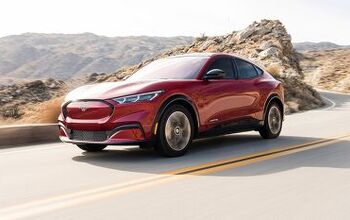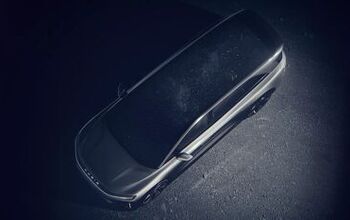Only A Nutcase Would Import A Car To America. B.S. Wants To Change That, And He Needs Your Signature

As a worldly American and car nut, on one of your world travels, there will be a time when you fall in love with a car in a foreign land. The crush on that thing will be so big that you will want to take the irresistible beauty home with you. Just ask Sajeev or Frau Murilee.
My advice: Resist that urge at all cost. Trust me, it is easier to import a new wife from Pago-Pago to America than to bring-in a lightly used Euro-spec Porsche from Zuffenhausen. There is one man who wants to change all that: A man with the initials B.S. petitioned the White House to liberalize the immigration rules for used cars. No, it’s not THAT BS.
Benjamin Sharabani of Venice, CA, wants the Obama administration to “lower non-federalized vehicle importation requirements with NHTSA & EPA to 10-years from the current 25-years.”
This is a worthy cause, because America is for all intents and purposes closed to cars that have not been “federalized” – in itself a time- and money consuming exercise, which only very large or very rich and determined importers can afford. Unless that car is more than 25 years old, a non-federalized car needs to stay out of the country – or else.
The Department of Homeland Security warns:
“The Federal agencies that regulate the importation of non U.S. version or nonconforming vehicles are the Environmental Protection Agency (EPA), Department of Transportation (DOT), U.S. Customs and Border Protection (CBP), and the Internal Revenue Service (IRS). These agencies do not encourage the importation of non U.S. version or nonconforming vehicles for on-road use because converting a nonconforming vehicle is usually very expensive, and sometimes impossible or impractical. It is possible that a car will conform to one agency’s requirements but not another’s.”
If you go to the EPA for guidance, you will hear:
“EPA strongly recommends that prospective importers buy only U.S. version (labeled) vehicles, because of the expense and potential difficulties involved with importing a non-U.S. version vehicle. EPA strongly recommends that current owners of non-U.S. version vehicles sell or otherwise dispose of those vehicles overseas rather than ship and import them into the U.S., because of the expense and potential difficulties involved with importing a non-U.S. version vehicle.”
The NHTSA is a bit more circumspect:
“Since the cost of modifying a nonconforming vehicle, or the time required to bring it into conformance, may affect the decision to purchase a vehicle abroad, we strongly recommend discussing these matters with a Registered Importer before buying and shipping a vehicle to the U.S.”
Basically, the NHTSA leaves it to the Registered Importer to tell you: “Are you nuts?”
They will explain to you that you must post a bond of three times the value of the car to U.S. customs, and then again a bond of one and a half times the value of the car to the DOT, before the Registered Importer even can start trying to bring the car in compliance “with all applicable DOT Federal Motor Vehicle Safety Standards (FMVSS).” If you have not declared bankruptcy at this point, and/or committed yourself to an asylum, you will have to deal with the EPA.
Trust me: It will be easier to get green cards for a whole harem than to import a foreign car that was built after 1988.
Forget about bypassing these regulations. Even if you stick the car in a container and pile bales of Marijuana on it to throw the Feds off scent, Homeland Security will tell you: “You will need the CBP Form 7501 to register the vehicle with the Department of Motor Vehicle. CBP will not give you this form without approval from the EPA and DOT.”
There is a “ List of nonconforming motor vehicles that are eligible for importation.” Importation not by mere mortals, mind you, it must be done through a Registered Importer. Don’t get your hopes up. Most of the cars on that list are there because they are “substantially similar to a U.S.-certified vehicle”. As in Jeep or Chevy. Even if that’s the case, extensive paperwork is required.
Now what about truly foreign cars? According to the list, less than 50 cars have sufficiently established “that the vehicle has safety features that comply with, or are capable of being altered to comply with, all applicable Federal motor vehicle safety standards.” Oddly, 14 of them are G-Wagens built between 1997 and 2006.
Ben’s car, The 1997 911 C4S, left. Ben vowed to “one day I will destroy” his friend and his Viper, right. Friend’s tag obscured, Ben’s tag in the buff to show the authorities that he is real
In other civilized parts of the world, such as Europe and in allegedly closed Japan, legalizing a non-approved car is as easy as checking that it has lights and brakes. You have it inspected, you sign a few forms, and you are good to go. If you want to import on a somewhat grander scale, no problem: Both the EU and Japan have special dispensations for low volume imports that are let into the country with a minimum of fuss. This, by the way, is how most of the U.S. makers import their cars to Japan and Europe. Only to bitch that the regulations are too onerous.
Even China is more lenient than the U.S.: Officially, the importation of used cars is bu hao, or verboten, as we say in America. But if you know someone – mei wen ti – no problem.
In America, they have you by the gonads if you bring in a foreign car. Say you paid all the bond money, but somehow you failed to bring the car in compliance. Trust me, the system is built to make you fail. Then, all that is left to you is to junk the car and kiss your bond money good-bye, you think? No, you can’t even do that. Says your friendly DHS: “It is also illegal to dispose of the vehicles in a junkyard. Non-compliant vehicles must be exported, destroyed, or brought into compliance.”
Catch 22, meet Kafka. Kafka, meet Catch 22.
But then, this might all change if Benjamin Sharabani’s petition is heard, right? Wrong again.
Benjamin needs 100,000 signatures by March 21, 2013. Yes, that’s a moth from now. He has 19 signatures now. Only 99,983 to go. Oh, and your 100,000 friends need to give their names and email addresses to the government. The Internet-savvy White House will even keep the petition from being searchable via Google if it has less than 150 signatures. But once 100,000 sign, it will get action, right? You can’t be wronger. Says the White House:
“If a petition gets enough support, White House staff will review it, ensure it’s sent to the appropriate policy experts, and issue an official response.”
Gee, thanks!
The petition system, by the way, is a Chinese import. There, it has been around for centuries. Except that when you go to Beijing and petition, you might get roughed up in a dark alley when you go home.
Maybe that’s what those email addresses are for.

Bertel Schmitt comes back to journalism after taking a 35 year break in advertising and marketing. He ran and owned advertising agencies in Duesseldorf, Germany, and New York City. Volkswagen A.G. was Bertel's most important corporate account. Schmitt's advertising and marketing career touched many corners of the industry with a special focus on automotive products and services. Since 2004, he lives in Japan and China with his wife <a href="http://www.tomokoandbertel.com"> Tomoko </a>. Bertel Schmitt is a founding board member of the <a href="http://www.offshoresuperseries.com"> Offshore Super Series </a>, an American offshore powerboat racing organization. He is co-owner of the racing team Typhoon.
More by Bertel Schmitt
Latest Car Reviews
Read moreLatest Product Reviews
Read moreRecent Comments
- Jeff Self driving cars are not ready for prime time.
- Lichtronamo Watch as the non-us based automakers shift more production to Mexico in the future.
- 28-Cars-Later " Electrek recently dug around in Tesla’s online parts catalog and found that the windshield costs a whopping $1,900 to replace.To be fair, that’s around what a Mercedes S-Class or Rivian windshield costs, but the Tesla’s glass is unique because of its shape. It’s also worth noting that most insurance plans have glass replacement options that can make the repair a low- or zero-cost issue. "Now I understand why my insurance is so high despite no claims for years and about 7,500 annual miles between three cars.
- AMcA My theory is that that when the Big 3 gave away the store to the UAW in the last contract, there was a side deal in which the UAW promised to go after the non-organized transplant plants. Even the UAW understands that if the wage differential gets too high it's gonna kill the golden goose.
- MKizzy Why else does range matter? Because in the EV advocate's dream scenario of a post-ICE future, the average multi-car household will find itself with more EVs in their garages and driveways than places to plug them in or the capacity to charge then all at once without significant electrical upgrades. Unless each vehicle has enough range to allow for multiple days without plugging in, fighting over charging access in multi-EV households will be right up there with finances for causes of domestic strife.





































Comments
Join the conversation
Perhaps we should expand the reach of this petition. Put this link next to Hello-Kitty wrapped kei-cars and woo the female car owners ;)
What I find sad and pathetic is how much attention is put on finding grey market Nissan Skylines and destroying them and jailing owners while illegal aliens continue to wreck this country. Priorities huh?